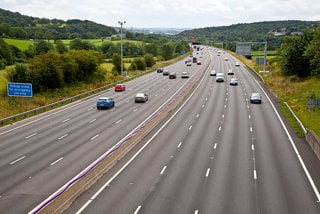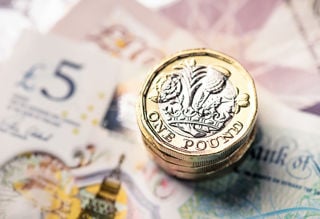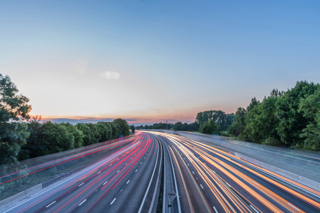The proportion of employees travelling on business is expected to stay broadly the same post-pandemic*, new research from the Department for Transport (DfT) suggests.
Companies expect an average of 38% of employees to be travelling for business, compared with 40% before the pandemic. Just 1% of the firms surveyed by Ipsos Mori said no employees will travel for face-to-face meetings.
The DfT data, however, suggests that the frequency of face-to-face meetings is expected to fall as virtual meetings will continue to be used in the future.
Two-fifths (41%) of companies said that they expect to make fewer business trips than before the pandemic (27% somewhat less, 14% far less) and more than a quarter (27%) expect to make more business trips (19% somewhat more, 8% far more).
Almost a third (30%) said they expected to make the same level of business trips.
Most businesses predicted that among their employees, most would travel at least monthly – but the proportion saying so fell from threequarters (76%) before the pandemic to two-thirds (65%) after the pandemic, with a third (35%) predicting most employees would travel less than once a month.
Fewer expected their employees to travel at least weekly, down from two-fifths (40%) before the pandemic to a third (34%) after.
The largest reductions in weekly travel were expected among medium-sized businesses – almost half (49%) reported that their staff travelled at least weekly before the pandemic.
This is estimated to fall to 39% post pandemic, and for companies in Wales/Scotland/Northern Ireland from 74% to 38%.
The largest reductions in monthly travel were also expected among medium-sized companies, from 87% to 67%, while the DfT data for large companies suggested a fall of 83% to 68%.
GROWING RELIANCE ON THE CAR
There has been a growing reliance on the company car, and grey fleet vehicles, according to the DfT survey.
Before the pandemic, car was the most frequently used main mode of travel for domestic business trips.
Almost one-in-three (29%) business trips were undertaken in a car, followed by long-distance rail (15%), local trains (14%), domestic airline (14%), local buses (6%), taxi (4%) and other modes including cycling/walking (3%).
During the pandemic, use of the car as the main mode of business travel has increased significantly, up from 29% to 43%, while there was a reduction in the use of shared transport, according to the DfT survey.
Use of long distance and inter-city train services as the main mode decreased significantly from 15% before the pandemic to 8% during the pandemic.
Use of domestic airline services also decreased significantly, from 14% pre-pandemic to 9% during the pandemic.
The findings echo those from the OC&C Speedometer ‘Battery Late Than Never’ report, published earlier this year, which suggested that the pandemic had helped cement the importance of a car, despite people driving less.
More than two-in-five drivers (42%), according to the OC&C Speedometer report, said the pandemic has increased their belief that a car is essential, due to fears around shared transport and the transmission of Covid-19.
Assuming restrictions are no longer in place, companies told the DfT survey that they expect to be using a similar mix of main modes as before the pandemic, with a return to long-distance rail and domestic air travel, and a reduction in the proportion of car journeys compared with levels during the pandemic.
Companies said that they expect an average of 33% of trips to use car as their main mode of transport, compared with 29% pre-pandemic.
Almost one-in-eight (13%) said they would choose to use long-distance rail as their main mode versus 15% pre-pandemic, and 11% would use domestic airlines, compared with 14% before Covid-19 struck.
In terms of other modes, companies expect an average of 10% of trips to be done on local trains versus 14% pre-pandemic and 11% during the pandemic.
The survey suggests that 7% will use local buses, compared with 6% pre-pandemic and 4% during, and 5% will use taxis, which is an increase on 3% pre-pandemic and 5% during.
Other modes, including cycling and walking, are expected to account for 3% of business trips, which is the same as proportion seen pre-pandemic and down from the 5% seen during Covid-19.
* Post-pandemic was defined in the survey as being ‘when Covid-19 is controlled to the point that all restrictions on business and the public have been lifted’.























Login to comment
Comments
No comments have been made yet.